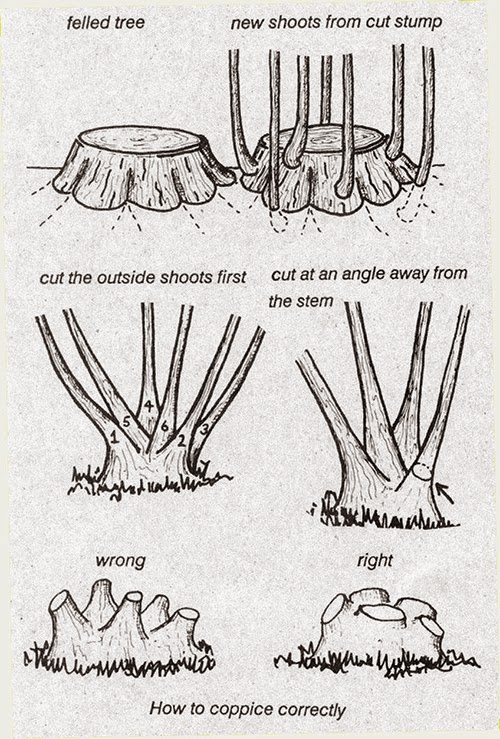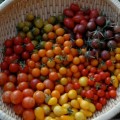 Garden Vocabulary: Coppice/Coppicing
Garden Vocabulary: Coppice/Coppicing
Coppicing isn’t as popular or known as it was in the distant past, although experienced woodland managers might use it to provide supplies for building wattle fencing or other garden/farm structure, especially for historical recreation projects.
If you have access to a woodland with trees that respond to coppicing, you might be able to create supplies for your own garden or home projects right on-site. I have linked more information below that should allow you to get started.

From Wikipedia...
By Naturenet – Own work, CC BY 3.0, LinkCoppicing is a traditional method of woodland management which takes advantage of the fact that many trees make new growth from the stump or roots if cut down. In a coppiced wood, which is called a copse, young tree stems are repeatedly cut down to near ground level. In subsequent growth years, many new shoots will emerge, and, after a number of years the coppiced tree, or stool, is ready to be harvested, and the cycle begins again. Pollarding is a similar process carried out at a higher level on the tree.
Many forestry practices worldwide involve cutting and regrowth, and coppicing has been of significance in many parts of lowland temperate Europe. The widespread and long-term practice of coppicing as a landscape-scale industry is something that remains of special importance in southern England. For this reason many of the English-language terms referenced in this article are particularly relevant to historic and contemporary practice in that area.
Typically a coppiced woodland is harvested in sections or coups[1] on a rotation. In this way, a crop is available each year somewhere in the woodland. Coppicing has the effect of providing a rich variety of habitats, as the woodland always has a range of different-aged coppice growing in it, which is beneficial for biodiversity. The cycle length depends upon the species cut, the local custom, and the use to which the product is put. Birch can be coppiced for faggots on a three- or four-year cycle, whereas oak can be coppiced over a fifty-year cycle for poles or firewood.
What can you share about this Garden Vocabulary entry? Help educate us all in the comments!
This Garden Vocabulary series seeks to introduce and explain to you — and in many cases, myself — words and terms associated with gardening. Please let me know if there are any terms you would like me to explore. You can leave your ideas in the comments section and we can learn together!




